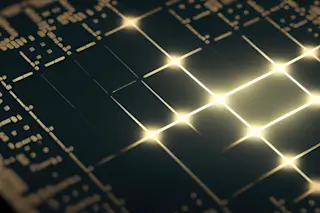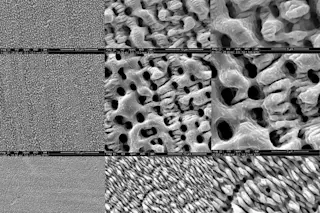For everyone out there who'd like to hear a little less of their amorous neighbors, not to mention their kid badly playing the violin, there may be hope: Hong Kong scientists have devised a delightfully simple material made of latex and plastic that they say could one day reduce the racket at noisy places like airports. The paper appears in Applied Physics Letters. Zhiyu Yang and colleagues devised a system of thin tiles that, when assembled into a large sheet, could cancel out noise in a huge range, including the bass frequencies that tend to breach the walls of our apartments and houses with ease. Each panel is just three millimeters thick, and less than half an inch wide, with the weighted plastic button in the middle.
When sound waves hit the panel, the membrane and weighted buttons resonate at difference frequencies. "The inner part of the membrane vibrates in ...














